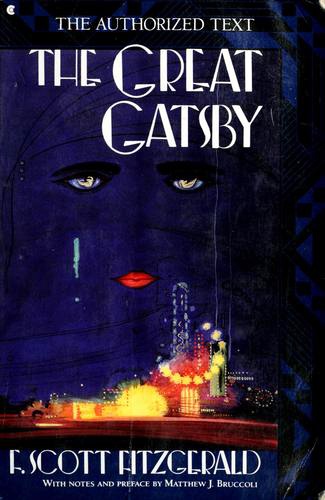Reviewed by Whitney @ First Impressions Reviews on
Nick Carraway, our narrator has just moved to the west egg of Rhode Island, in other words "new money" who happens to live next door to Jay Gatsby's party house. Gatsby first comes off as elusive but eventually opens up asking Nick for a favor, to invite Nick's married friend Daisy to tea in which Jay may just happen to pop in. It is this favor which allows events to spirals out of control. Essentially, the novel is about passion from afar.
Like I said, The Great Gatsby takes a while to easy into, until Daisy's husband Tom is seen having an open affair it was a bit like wallpaper paste. But then Tom slugs his annoying, snob of a mistress Myrtle in the face, and to be honest if he hadn't I would have found a way myself. Anyway, one run-on sentence later and we have one hell of a story!
The Great Gatsby actually reminded me of Wuthering Heights, none of the characters were likeable and both focus on wealth and class (hell both Cathy and Daisy chose dollar signs over true love). Also, there is a confrontational scene between Tom/Daisy/Gatsby that parallels that of Linton/Cathy/Heathcliff (and did you notice that both of the homewreckers go by their surnames?) Anyway, the confrontation involves a "who loves who" which climaxes like a good orgasm.
F. Scott Fitzgerald writes with such clarity that it is easy to imagine yourself in that era, sipping champagne with the glitz and glam of bootlegging and wealth. An exhilarating read!
Reading updates
- Started reading
- 9 January, 2012: Finished reading
- 9 January, 2012: Reviewed
